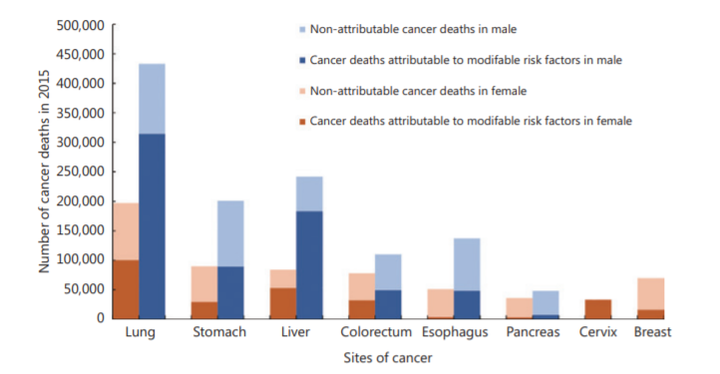
the trend of cancer burden in China
With the aging population, the burden of cancer in China continues to grow. Changes in risk factors for cancer, especially diet, obesity, diabetes, and air pollution, continue to fuel the shift of cancer transition in China. The burden of upper gastrointestinal cancer in China is decreasing, but still heavy. The rising burden of colorectal, prostate, and breast cancers is also significant. Lung cancer became the top cause of cancer-related deaths, together with smoking as the most important contributor to cancer deaths. The Chinese government has taken several approaches to control cancer and cancer-related risk factors. Many achievements have been made, but some challenges remain. Health China 2030 is ambitious and depicts a bright vision of the future for cancer control in China. We aims to describe the trends of cancer burden and discuss cancer-related risk factors in China.
the dietary transition and its impact on the cancer burden in China
Dietary factors have been linked to several types of cancer. Little is known, however, about the role that the dietary transition has played in China’s fight against cancer. To this end, we aims to estimate the proportion and number of diet-related cancer cases from 2010 to 2019 in China. Assuming a ten-year lag, we investigated diet-related cancer cases using the PAFs, incidence rates, and population data between 2010 and 2019. The effects of population growth, population aging, and diet-related incidence rates on diet-related cancer trends were derived using a decomposition method.
global patterns of cancer transitions: a latent class modelling study